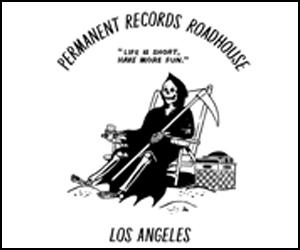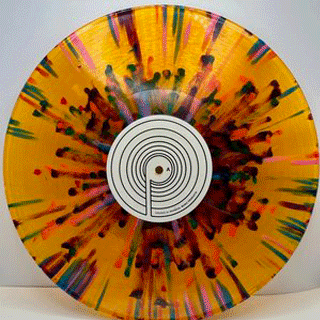The Residents: The mythos and magic behind the masks
Steve Hochman on
1

Homer Flynn fondly recalls a time when his daughter, now 24, was just 4 or 5 and getting ready for Halloween.
“She wanted to be Winnie the Pooh disguised as a bunny,” he says.
So … a little girl dressed up as a fictional character — and then a mask over that. A costume plus a secret identity.
“That charmed me.”
As it would any dad. For Flynn, though, it represented something else: that his daughter “got it.” Well, it would have been hard for her to miss it, given that she was born and raised in it. Since the early ’70s, Flynn has been spokesman/manager/visual designer and more (perhaps much more) for the Residents, the pioneering Bay Area-based multi-media venture that has made multiple layers of fiction its reality, so to speak. Costumes inside characters inside masks inside secret identities inside conceits inside misdirections inside satires inside parodies inside abstractions inside giant eyeball heads. It’s not just an art nesting doll, it’s nesting dolls inside nesting dolls, seemingly infinite. Art turtles all the way down.
“The mask over the mask is one of my favorite things,” he says. “Just an odd thing. When you pull the mask down, you’re supposed to be revealing something. But when it’s another mask, it’s, ‘What the fuck is going on here?’”
That is the core question of the recent documentary, “Theory of Obscurity: A Film About the Residents.” The movie will screen Saturday at downtown’s Regent Theater, followed that night by a performance of “Shadowland,” a Residents concert presentation originated for the 40th anniversary (four years ago) and drawing on works from throughout those decades and further playing with the notion of names (“Randy,” “Chuck” and “Bob”) and identity (still in the shadows), as discussed in the preview video here.
Not that these presentations answer the question. The film makes no attempt to reveal who and what is inside the masks. It shrugs off the whole notion that “real” identity matters. That’s not the point. It not being the point is the point.
As much as anything, the Residents are viewed as a spirit more than a solid entity.
“Ultimately that’s always been the way people felt around here,” says Flynn, whose official title (as official as titles get in the Residents’ world) is secretary of the Cryptic Corporation, the endeavor’s business wing. “As much as anything, the Residents are viewed as a spirit more than a solid entity, if you know what I mean. That spirit enables the entity through the people that embrace the spirit.”
Okay, a bit mystical there, but with purpose:
“Ultimately, that’s more important than who those people are.”
For long-time fans of the always-outsider ensemble, “What the fuck?” may also be the natural reaction, if with bemused pleasure, to the latest mask: The mask of respectability. The Residents are currently developing a new production in partnership with the always-groundbreaking, highly respected American Conservatory Theatre.
“It is something new,” Flynn says of at least the door to something resembling the mainstream being open to the Residents.
I was going to say that everybody is born on the outside and it takes work to get in. But for some people it’s easier than others.
“Yeah, I think it takes work to be an insider,” Flynn says. “I was going to say that everybody is born on the outside and it takes work to get in. But for some people it’s easier than others.”
The case could be made that the Residents have worked hard to remain on the outside. But the fact is, it came naturally.
Near the beginning of the film, a title card starts with the declaration, “There is no true story of the Residents.” That was from none other than Matt Groening, in something he wrote about the group in 1979. Well before he created “The Simpsons.” In which he several times paid homage to the Residents.
The film does, seemingly at least, confirm some key parts of the great mythos that has grown around the group. (We will go on the assumption that it is really a group, though it could be one person with various associates through the years.) The Residents did, apparently, originate around Shreveport, La., in the late 1960s, art-inclined outsiders in a very conservative climate. They did move to the Bay Area, lured by the free spirit of the Summer of Love, but soon became disillusioned by the aimlessness of that world, though they stayed nonetheless. They did send an anonymous demo tape to an executive at Warner Bros. Records, who had worked with their hero Captain Beefheart — but lacking a name he sent it back simply addressed to “RESIDENTS.”
There are interviews with various notables, associates and collaborators shedding light on what the Residents are, if not who: Groening, Penn Jillette (also seen in clips from 1982 in which he, as a young man, played the role of narrator for the Residents’, er, underground art-opera “The Mole Show”), Primus’ Les Claypool, Talking Heads’ Jerry Harrison, Ween’s Dean Ween and Devo’s Gerald Casale. Claypool talks about hating the Residents’ song “Constantinople” when a friend’s mom played it in the late ’70s, but then finding that the group was like a “fungus” that took over his life — and we see video of Primus performing Residents songs in concert, including, of course, “Constantinople.”
We see a surreal TV appearance of the group with country star Conway Twitty. We visit the Eyeball Museum in Germany, devoted to the group’s art and ephemera, named for the best-known item, the giant eyeball heads that became the Residents’ most-recognizable public presentation. We hear Groening gripe about such iconic things being ripped off and then see clips of the eyeball-head motif appropriated by Keisha, in various ads and some well-meaning homages.
And then we learn that the Residents won’t wear the eyeballs themselves, but hire others to do that. Another layer.
||| Watch: The Residents perform “Shadowland” last year in France:
So just what is/are the Residents, art-wise? There are some clear landmark works: The early oddball sonic experiments. The relentless march through pop history in “The Third Reich ’n’ Roll” album (Dick Clark as Hitler on the cover). The anthropological impressionism of “Eskimo” (fake anthropology, of course, as the impressions are of an imagined culture), followed by the contrasting pop concision of “The Residents’ Commercial Album,” with 40 songs each exactly one minute in length (and XTC’s Andy Partridge among the several guest performers). Forays into quasi-opera (the “Mole” trilogy) and oratorio (“Freak Show”).
And throughout there are some consistent, recognizable elements. The odd, flat vocal delivery, more spoken than sung. The combination of disjointed sounds both “conventional” and electronic instruments. But it’s difficult at best to give an overview of just what the Residents are, beyond some very vague generalities.
The most identifiable legacy, though, may not be in the art, but in the ways it’s been gotten out and the ways in which that’s built a relationship with an audience. The Residents’ were ahead of the punk DIY movement — out of necessity — with a truly indie label (Ralph Records and its largely mail-order operation, adorned with the imperative “Buy or Die” slogan) as well as with uses of new technologies, from interactive CD-Rom to internet reach. It’s a two-way relationship, in that technology is both means and inspiration.
“The Residents have always been interested in new technologies, how those interacted with the culture,” Flynn says. “But also interested in exploring new technologies, but in a lo-tech way. So you get genuine humanity and inject it into new technology and humanize it. That’s one thing the Residents always delight in.”
But enough about legacy. Enough about their past. Time for something new, and the Residents have something brewing, Flynn says, examining a perilous technology from an earlier era.
There is a new album in the works, based around the theme of train wrecks.
“There is a new album in the works, based around the theme of train wrecks,” he says. “And that is coming along very nicely.”
And not metaphorical train wrecks, such as those in our political season. Well, not only.
“Literal and metaphorical, both. I know a lot of the research that went into this. Somebody came up with a book of collected newspaper articles of the late 1800s and early 1900s and the title is ‘Death by Train.’ It’s everything from horrible train wrecks to people who fall under the tracks. A lot of what became compelling to the Residents is the language of that era is so elegant and exquisite, but the events described are so horrific. Strange juxtaposition created, and they are working off that. This is from an era when train travel was dangerous. This is the era they are working off, looking for content to write about, looking for human stories within these train wrecks that have the most train wreck metaphorical meaning.”
Train wrecks in bunny masks.
||| Live: The Residents perform Saturday at the Regent Theater after a screening of the film “Theory of Obscurity: A Film About the Residents.” Tickets.




[…] The Residents [see our feature] perform “Shadowland” after a screening of the documentary “Theory of Obscurity: […]